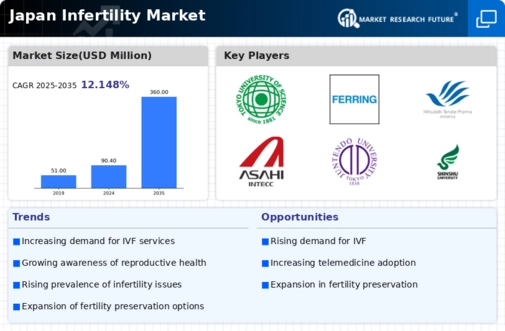The Japan Infertility Market is characterized by a complex landscape that involves various stakeholders, including medical institutions, private clinics, research organizations, and technology providers. This market has seen significant growth due to increasing awareness about infertility issues, coupled with advancements in reproductive technologies and growing demand for assisted reproductive services. The competitive dynamics within this market are driven by innovation, regulatory considerations, and the availability of specialized treatment options that cater to diverse patient needs.
With the rise in infertility rates, there is a pressing requirement for effective solutions, which has led to increased investment in research and development of infertility treatments and technologies, creating a competitive environment where companies strive to offer cutting-edge services and products.EGlobal Trade and Technology Company has made a significant mark in the Japan Infertility Market through its robust technological solutions that support fertility treatments. With a strong focus on integrating advanced technologies such as artificial intelligence and data analytics, EGlobal Trade and Technology Company enhances the efficacy and efficiency of fertility interventions.
The company is recognized for its commitment to improving patient outcomes by offering innovative diagnostic tools and treatment protocols that are tailored to the needs of Japanese patients. Its strategic partnerships with healthcare providers and research institutions have further solidified its presence in the market, enabling the company to leverage its technological advantages to foster collaboration and drive innovation in infertility solutions within Japan.Tokyo University is a leading institution in the Japan Infertility Market, recognized for its groundbreaking research and contribution to reproductive medicine.
The university is instrumental in developing various key products and services, including advanced fertility treatments and comprehensive education programs for healthcare professionals. Tokyo University's strong reputation and extensive research facilities empower it to foster collaborations with private clinics and pharmaceutical companies, enhancing its market presence.
The university's strengths lie not only in its innovative research initiatives but also in its ability to attract funding and partnerships that facilitate advancements in infertility treatments. In terms of mergers and acquisitions, Tokyo University has successfully formed alliances with several private entities to expand their research capabilities and enhance the translation of research findings into practical applications for infertility treatments in Japan. This collaborative approach underscores its commitment to addressing infertility challenges through effective science-based solutions.


















